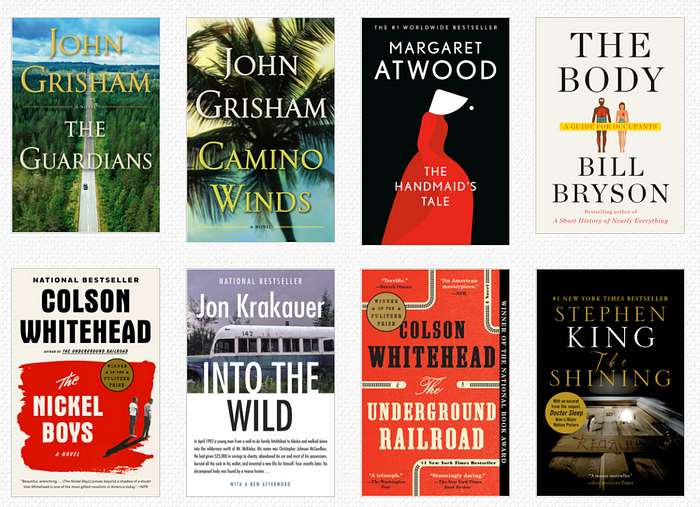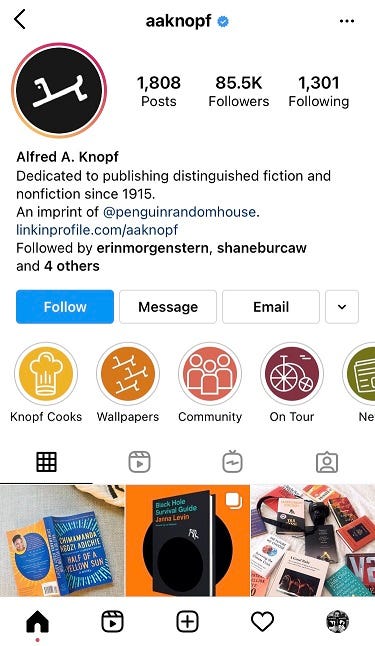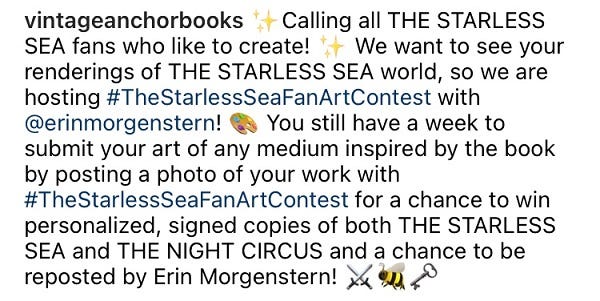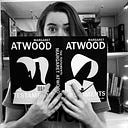Great Adaptations: How Knopf Doubleday is Keeping Up in Today’s Publishing Industry
Once existing as several large players in the publishing world, the Knopf Doubleday Publishing Group has given the world well-known titles from authors like Margaret Atwood, Stephen King, E.L. James, and John Grisham. Knopf Doubleday is a New York City based publishing group, and though it operates under Penguin Random House, it runs ten of its own imprints that publish a variety of both Fiction and Non-fiction titles.

Much of Knopf Doubleday’s identity as a publishing group comes from its long standing history in the publishing industry. Seven of their ten imprints were founded prior to the 1960’s. Alfred A. Knopf and Doubleday, the two central imprints of the group, are particularly renowned. Alfred A. Knopf was founded in 1915, and Doubleday in 1897 under the name Doubleday & McClure Company. Both rose in status to become some of the largest publishing houses at the time before eventually being sold to Random house (Knopf in 1966 and Doubleday in 1998), and being combined to form the Knopf Doubleday Publishing Group. Today the group allows the reputation of Knopf and Doubleday to guide its image. Unlike some of the other Penguin Random House publishing groups, Knopf Doubleday has not tried to rebrand or modernize, but rather the opposite. Their website maintains a classic style that uses the imprints’ original logos and stories to emphasize the history behind their imprints above all else. This allows them to draw further on the prestigious status that Knopf and Doubleday maintained in the twentieth century.
Today Knopf Doubleday remains one of six major publishing groups within Penguin Random House. Knopf Doubleday’s imprints publish a wide variety of titles that meet different demands in the market. Six of these imprints publish a diverse set of biographies, memoirs, literary fiction, and even some graphic novels. Some have a noticeable focus on social commentary, with titles such as Robert S. Devine’s The Sustainable Economy and Carlo M. Cipolla’s The Basic Laws of Human Stupidity. Others are popular fiction titles like Kevin Kwan’s Crazy Rich Asians or biographies on everyone from Sylvia Plath to Ruth Bader Ginsberg.
In addition, four of their imprints cater specifically to niche markets. These include Schocken, publisher of Jewish literature, Vintage Espanõl, one of the largest US Spanish-language publishers according to their website, and Black Lizard, which specializes in crime fiction. Knopf Doubleday is also known for reprinting classic stories. Their imprint Everyman’s Library provides new editions of classics like Heidi, Aesop’s Fables, and collections of writings from a multitude of famous authors including Jane Austen, Charles Dickens, Mark Twain, and more. In addition, other Knopf Doubleday imprints publish modern classics such as Ralph Ellison’s Invisible Man and Albert Camus’s The Plague.
Because of this diversity, Knopf Doubleday maintains a strong stance alongside other groups owned by the remaining “big five” houses that make up Penguin Random House’s competition (Simon & Schuster, Hachette, HarperCollins, and Macmillan). These include publishers like Henry Holt (Macmillan) and Scribner (Simon & Schuster) which publish similar titles.
Just like their competitors, Knopf Doubleday has had to modify their product and marketing to survive in the wake of rapidly changing technologies. So how have they adapted?
Changes in Technology
The rapid growth of new technologies that has come with the development of the internet has caused major shifts within the publishing industry. E-books and audio books are becoming major players alongside traditional print books. In the 13 years since Amazon released the Kindle in 2007, e-books have become commonplace. Audio books have risen in popularity as well, especially through the creation of services like Audible. According to an article by Publishing Perspectives, Knopf Doubleday specifically made efforts in the early 2010’s to begin adapting to the new markets. Their editors met frequently to discuss the emerging platforms of e-books, e-shorts, and apps, and how to embrace these technologies within the group.
Today Knopf Doubleday offers most of its titles in eBook and audiobook formats, and distributes them through suitable retailers: Apple Books, Kobo, Audible, Audiobooks.com, Libro/fm, and the Google Play Store. Penguin Random House itself has several imprints specifically dedicated to publishing audiobooks. They have even set aside a separate website, www.penguinrandomhouseaudio.com, where readers can find blogs, recommendations, and podcasts about their audio titles. Penguin Random House will often have the authors themselves or even celebrities (a list of which can be found here) read the books to enhance the listening experience. They have produced many award winning audiobooks including Roald Dahl’s Matilda (Read by Kate Winslet) and Charlotte’s Web (Read by Meryl Streep and others).
Ebooks have emerged even more recently. This is an area in which Knopf Doubleday began adapting early on. In addition to converting regular print books to e-books, their imprint Vintage released one of their first successful “e-shorts”, Beyond Outrage, in 2012. The short became a bestseller and was later printed in paperback according to an article about the groups digital innovation. In 2014 they introduced “Vintage Shorts” on their website, a program run by Vintage and Anchor Books that would present select writings exclusively as eBooks. Since then Knopf Doubleday and Penguin Random House as a whole have been working hard to try to enhance the eBook experience by adding sounds, videos, and interactive content that makes the reading experience different from a regular print book. Penguin Random House employees go into more detail about this below:
Ebooks and Audiobooks don’t make up all of these new digital products though. Penguin Random House and Knopf Doubleday have also found ways to merge publishing and technology through apps, and even augmented reality. In 2012 Knopf Doubleday created an app celebrating the famous Julia Child, for whom they have published several books. The app included recipes, videos, and clips from her show. Other apps released by Penguin Random House were designed to give more than a normal book, such as George R. R. Martin’s World of Ice and Fire, which includes character lists and interactive maps, and Pat the Bunny, which aims to be just as engaging as the beloved children’s book.
Most recently Penguin Random House has broken into the market for augmented reality books, having partnered with Facebook Portal. According to the Portal website, augmented reality books can incorporate animations and digital masks into book readings during live Facebook Portal calls. Although the technology still developing, even outside the publishing world, it provides a window into what the future of digital publishing could be like.
New Ways to Market
In addition to formatting books differently, publishers have had to market differently as well. Not only are more and more books being sold online, but between online reviews, social media, and new media formats, many more people are discovering the books they want to read through the internet as well. Most of the larger publishing houses have adapted to this in some capacity with the creation of their own websites etc., but Knopf Doubleday and Penguin Random House have taken some other specific steps to accommodate the new online format.

The rise in popularity of social media sites like YouTube and Instagram has made it much easier to market books online. In 2009, Knopf Doubleday created a YouTube channel for this purpose. Here they post book trailers, author interviews, and other promotional content. Though the channel itself only has a few thousand subscribers, the content that Knopf Doubleday is creating is able to be taken and shared on other platforms, whether that be through them or through the authors themselves.
Some of Knopf Doubleday’s imprints are especially active on Instagram, including Alfred A. Knopf, Doubleday, Vintage, and Anchor, which maintain Instagram followings of over 75,000. While Knopf Doubleday’s YouTube channel can only provide videos, these Instagram accounts allow them to post photographic content that encourages online engagement directly with readers. Their promotional photos often accompany product giveaways and book club announcements. The Instagram account dedicated to Vintage and Anchor Books even used the platform to host a fan art contest for Erin Morgenstern’s new book The Starless Sea, which Morgenstern was able to publicize on her own Instagram page.




On a broader scale, Penguin Random House, which handles a lot of the marketing for Knopf Doubleday, maintains their own social media channels and partners with iHeartMedia and BookTube in order to produce special author podcasts and interviews, according to their website.
Another form of book marketing that has emerged through the evolution of film and television shows, especially on online streaming platforms, is adaptations. Many books, contemporary and classics, are being adapted for the screen. For example, the Fifty Shades of Grey series written by E.L. James and published under the Knopf Doubleday Publishing Group, was adapted into a popular film series which grossed over one billion dollars at the box office, as publicized on the Penguin Random House website. Additionally, Margaret Atwood’s The Handmaid’s Tale was made into a popular Hulu series in 2017. Knopf Doubleday later released a movie tie-in version of the book. The creation of these adaptations works in tandem with Penguin Random House’s marketing by encouraging viewers, especially those who may not follow the book industry regularly, to buy the books.
Through these screen adaptations, social media, and diverse formats, the book industry is overlapping with other platforms and technology like never before. There is no telling how this will continue to evolve, as it has so rapidly in the last few decades. Regardless, the Knopf Doubleday Publishing Group has responded with vigor and adaptability to the changing climate, and proved that they can remain true to their historic identity while continuing to provide relevant titles to readers of all kinds.
Additional References:
Richard Campbell et al. “Media and Culture: mass communication in a digital age.” 10th edition.








